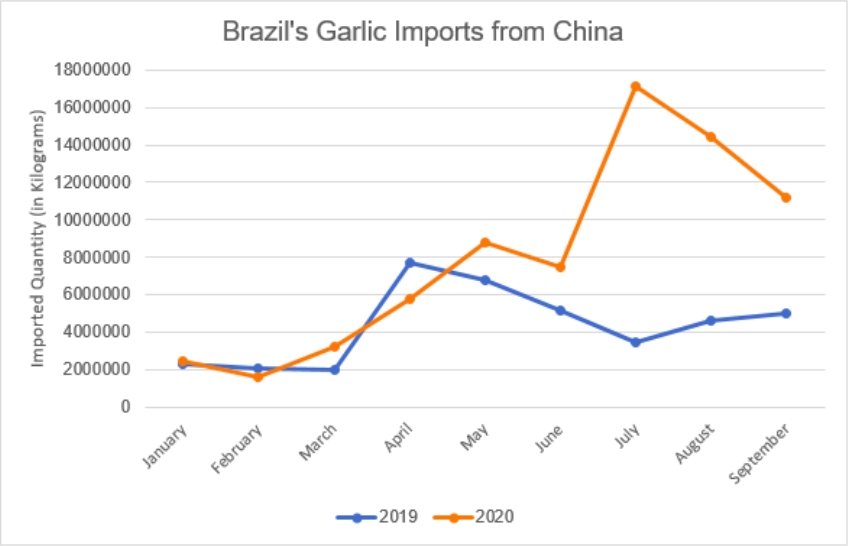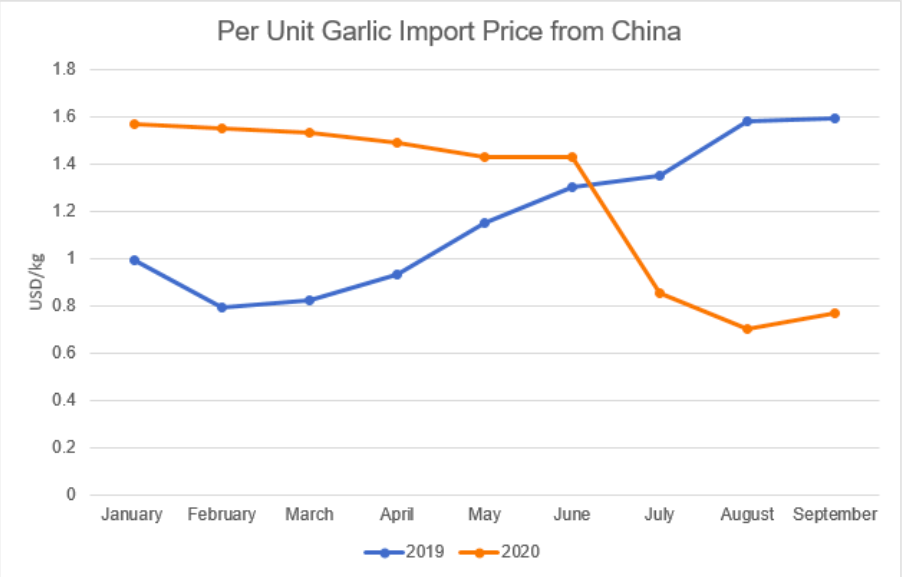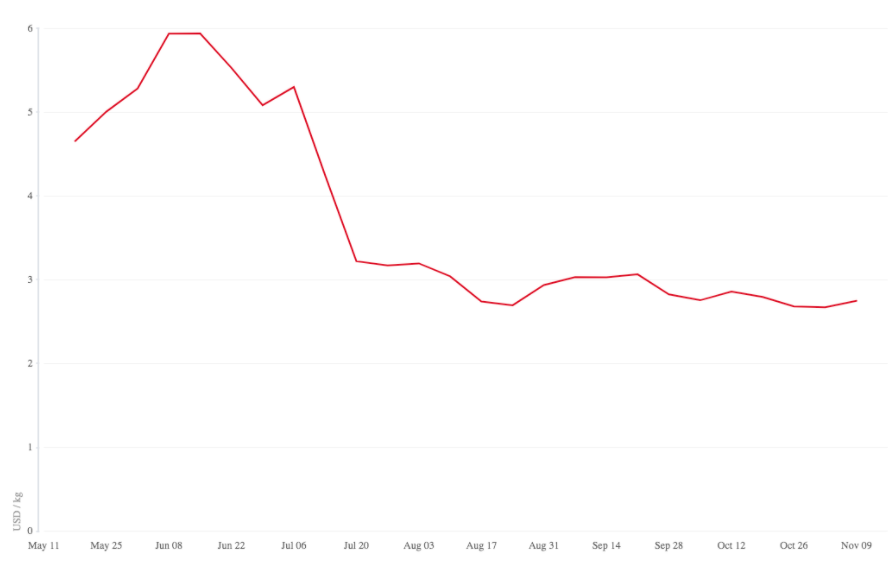Brazil’s garlic imports from China increase in 2020 despite anti-dumping tariff rates
Garlic is a key and beloved ingredient in Brazilian cuisine. The country imports garlic from Argentina, China, Egypt and China. Chinese garlic had a share of 15% in the quantity of total garlic imported in 2019. The quality and price of the Chinese garlic make it very attractive for Brazil to import from China despite the unfavourable dollar exchange rate. Brazilian Consumers generally prefer Chinese white garlic over the domestic Brazilian purple garlic which has a more intense aroma and flavour. The Brazilian government has imposed anti-dumping tariffs on imports of fresh or chilled Chinese garlic, to inflate the import price and protect local producers.
Increasing import of garlic from China
Brazil imported approximately 72K MT of garlic from China between January and September 2020 which is an increase of more than 80% for the quantity of garlic imports in comparison to the same period in 2019. This is the highest volume of garlic imported from China since 2017. Chinese garlic has a competitive advantage in Brazil due to the large volume of product, the variety offered and the low price of the product. Brazil imports white garlic from China which has a moderate aroma and flavour in comparison to the strongly flavoured garlic from Brazil.

Source: ITC Trade Map
The anti-dumping tariff imposed by the Brazillian government
The federal government of Brazil first imposed an anti-dumping tariff on garlic imports from China in 1995 to protect the national product. The anti-tariff duty was extended for a period of 5 years in 2019 and was fixed at USD 0.78 on per kg. In Q1 and Q2, the per kg import value of garlic remained high relative to the values recorded in 2019. However, in July the import value started falling and was 58% less than the value recorded in 2019. The average price per ton for importing Chinese garlic was the lowest in September 2020. The per kg price was USD 0.77/kg which is 106% less than in 2019 despite the anti-dumping tariff imposed on the product.

Source: ITC Trade Map
The cost of importing Chinese garlic is below the cost of producing garlic in Brazil which discourages the local producers in Brazil to cultivate garlic. Even after imposing the tariff, importing garlic from China will be efficient for the country due to high costs of production in Brazil. Furthermore, the presence of low priced Chinese in the domestic market of Brazil is pushing down the price of purple Brazilian garlic as well.

Source: Tridge, Wholesale Garlic Price in Sao Paulo
Sources
Agroinforme. Brazil increased import of Chinese garlic despite anti-dumping rate and high dollar.
ITC Trade Map. HS Code: 070320





